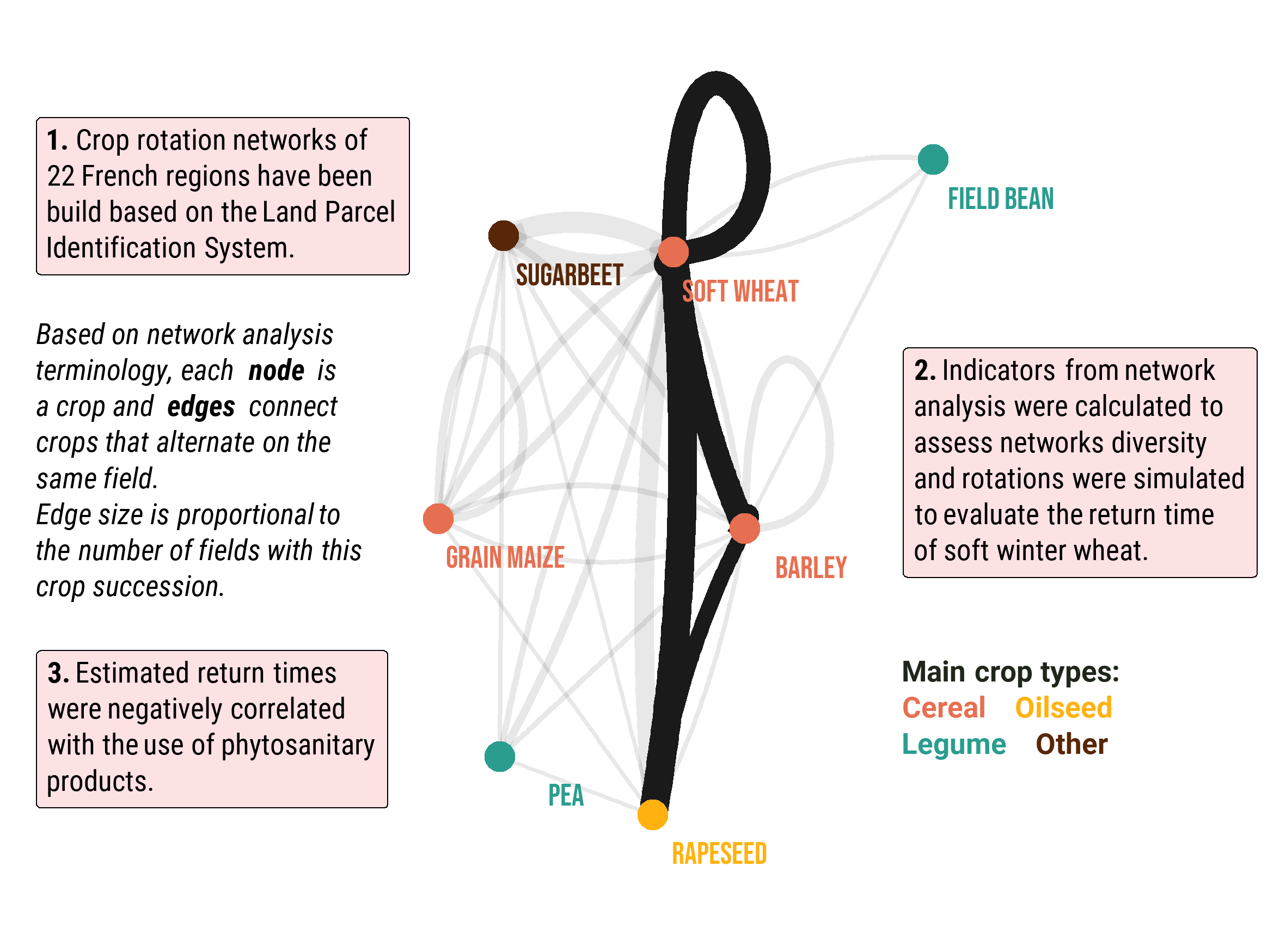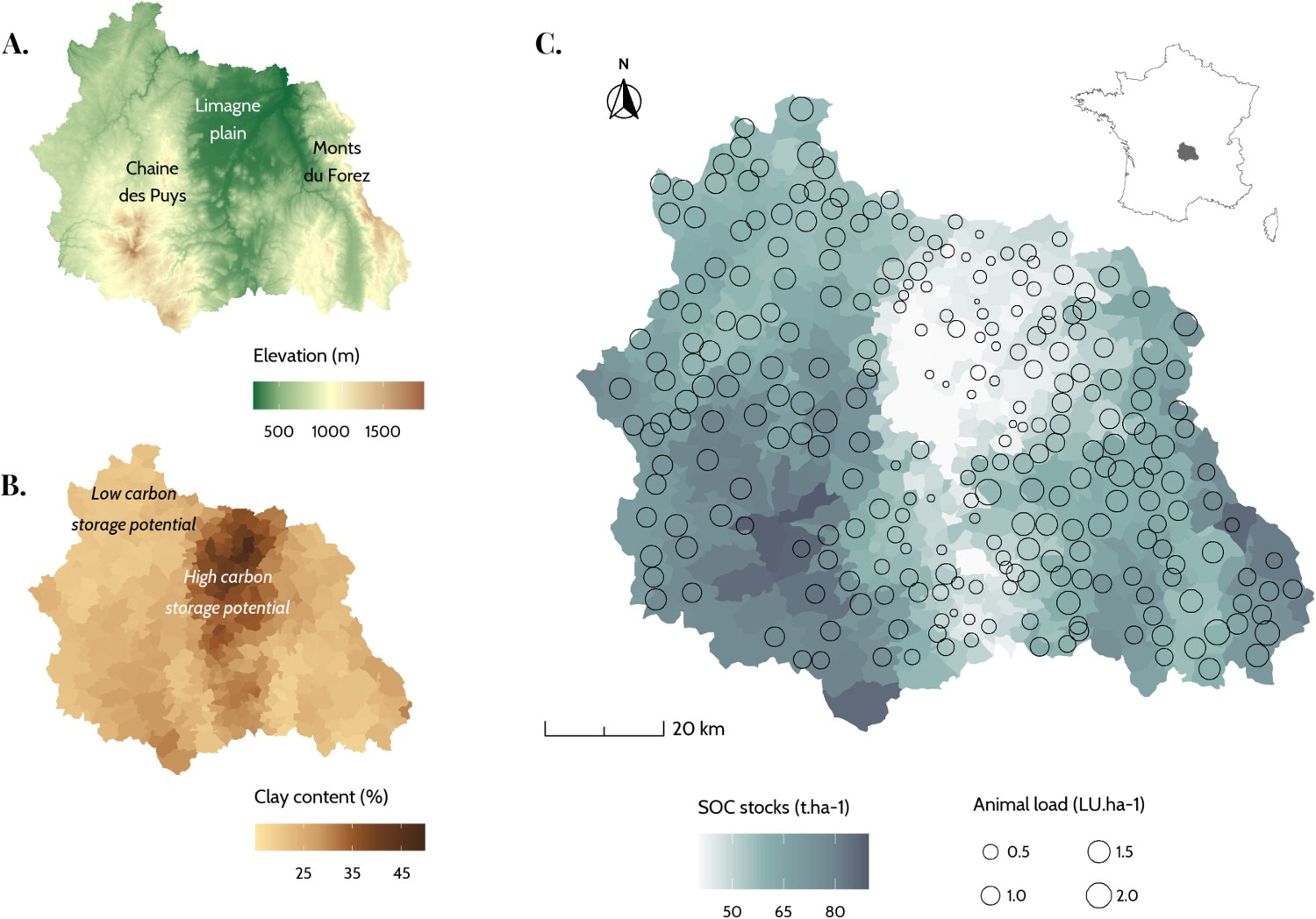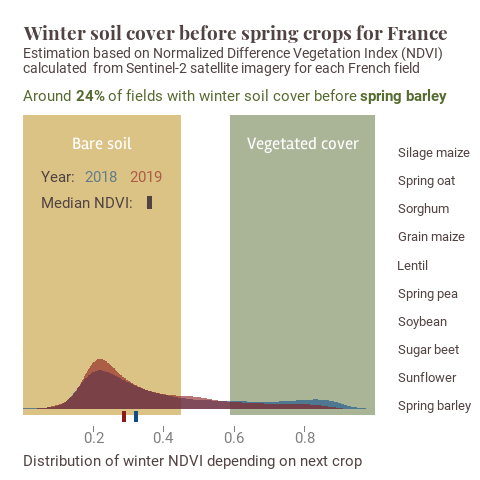
My teaching and research activities focus on remote sensing, soil sciences and biogeochemical cycles (mainly carbon, nitrogen and phosphorus).
Peer-reviewed publications
-
Assessment of the diversity of crop rotations based on network analysis indicators (2022). Benjamin Nowak, Audrey Michaud, Gaëlle Marliac. Agricultural Systems.

Simulations based on these networks allowed to estimate the return time of a given crop on the same field. For soft winter wheat, this indicator was strongly correlated with the use of phytosanitary products.
-
Soil-climate factors have a greater influence on the presence of winter cover crops than regulatory constraints in France (2022). Benjamin Nowak, Audrey Michaud, Gaëlle Marliac. Agronomy fo Sustainable Development.

Clay content was the soil-climate factor most negatively correlated with the adoption of cover crops whereas inclusion in a Nitrate Vulnerable Zone had little influence on cover crop adoption.
-
Territorial mapping to increase soil carbon storage (2021). B Nowak. Regional Studies, Regional Science.

Better allocation of organic resources (manure...) is needed to reduce the mismatch between current soil carbon stocks and storage potential.
-
Estimation of winter soil cover by vegetation before spring-sown crops for mainland France using multispectral satellite imagery (2021). B Nowak, G Marliac, A Michaud. Environmental Research Letters.

Less than half of French fields with winter soil cover before spring crops, with strong spatial variability and high influence of crop rotation (low soil cover for crops associated with arable farms, high soil cover for crops associated with livestock productions).
-
Precision agriculture: where do we stand? A review of the adoption of precision agriculture technologies on field crops Farms in developed countries (2021). B Nowak. Agricultural Research.
High adoption of "ready-to-use" technologies (GPS guidance...) but low adoption of variable rate application (for fertilization, seeding...).
-
Optimization of carbon stock models to local conditions using farmers' soil tests: a case study with AMGv2 for a cereal plain in central France (2020). B Nowak, G Marliac. Soil Use and Management.

Model and farmer's soil tests both show strong decrease in carbon stocks following the specialization of the territory to crop production but introduction of cover crops may stabilize stocks in the future.
-
Nutrient recycling in organic farming is related to diversity in farm types at the local level (2015). B Nowak, T Nesme, C David, S Pellerin. Agriculture, Ecosystems & Environment.
Application of network analysis to material exchanges between farms shows the importance of local diversity of production to enhance nutrient cycling.
-
Contribution of anthropogenic phosphorus to agricultural soil fertility and food production (2014). B Ringeval, B Nowak, T Nesme, M Delmas, S Pellerin. Global Biogeochemical Cycles.
More than three quarters of soil phosphorus is from anthropogenic sources (mainly rock phosphate fertilizers).
-
To what extent does organic farming rely on nutrient inflows from conventional farming? (2013). B Nowak, T Nesme, C David, S Pellerin. Environmental Research Letters.
Large scale imports of fertilizers (manures...) from conventional to organic farms challenges the potential for expansion of organic farming.
-
Disentangling the drivers of fertilising material inflows in organic farming (2013). B Nowak, T Nesme, C David, S Pellerin.Nutrient Cycling in Agroecosystems
Organic farms are generally achieving a balance between nitrogen, phosphorus and potassium outputs and inputs, thus limiting the risk of soil depletion.